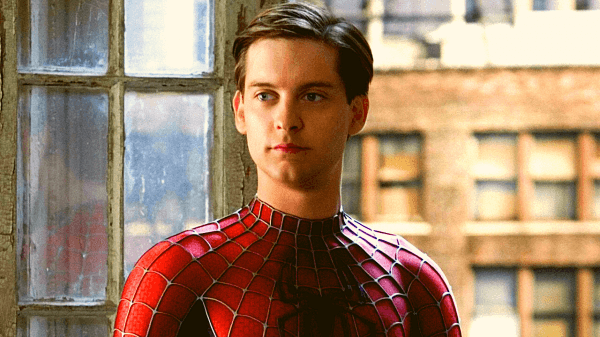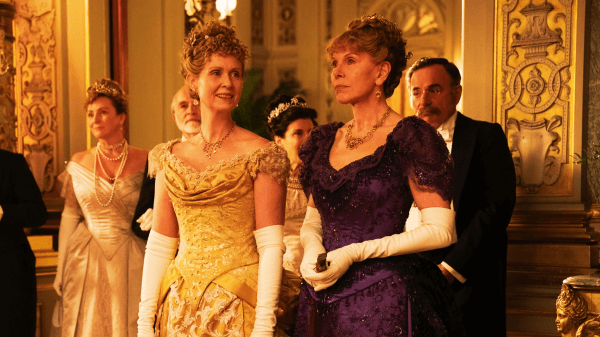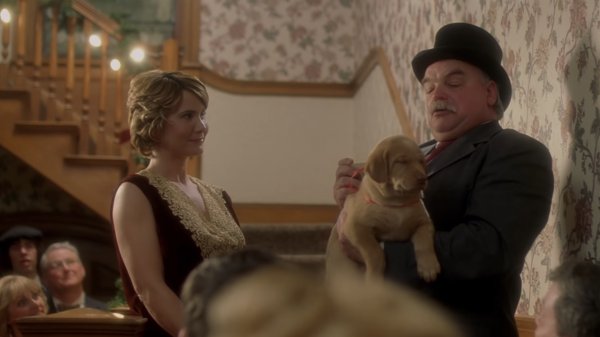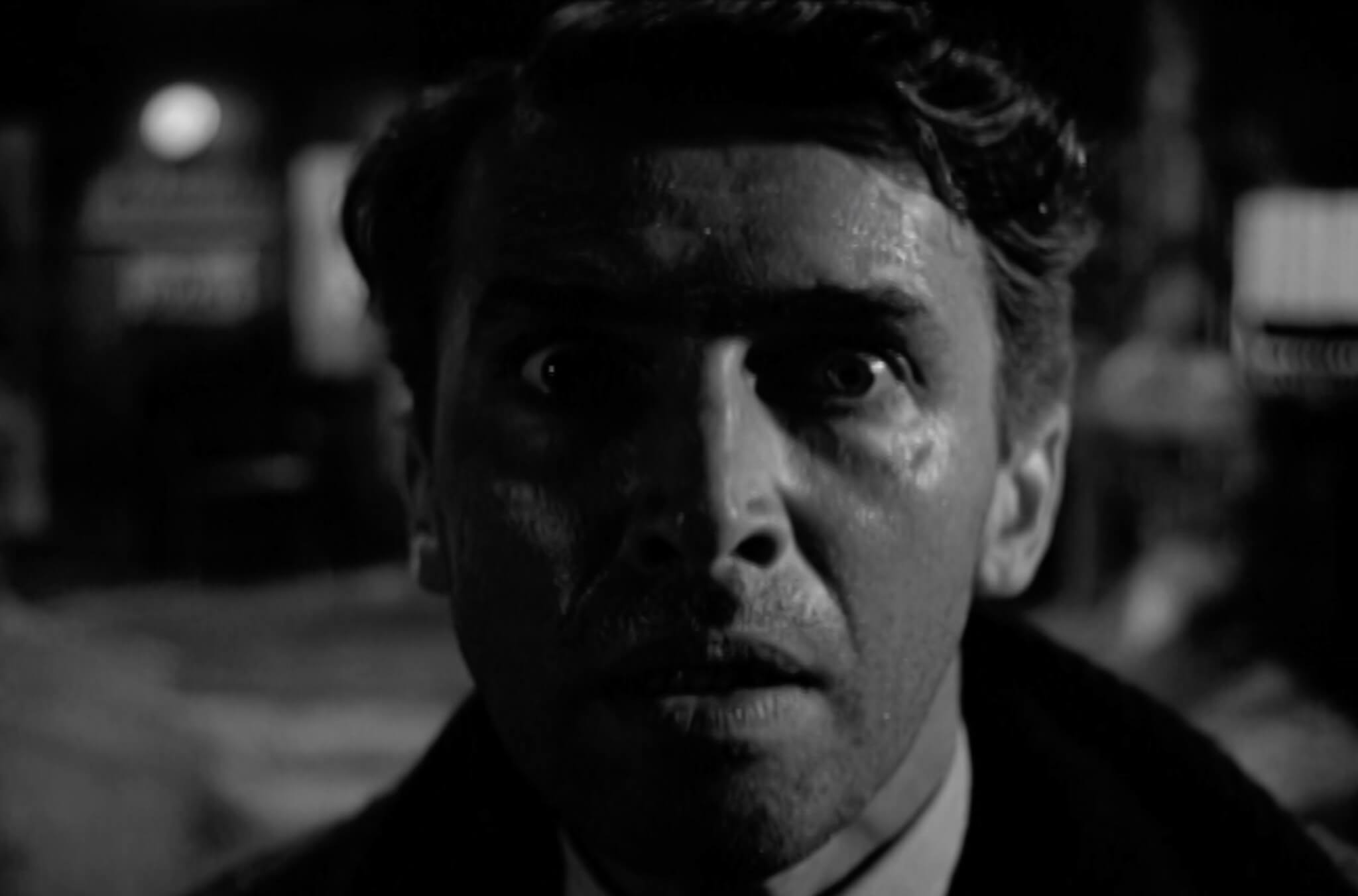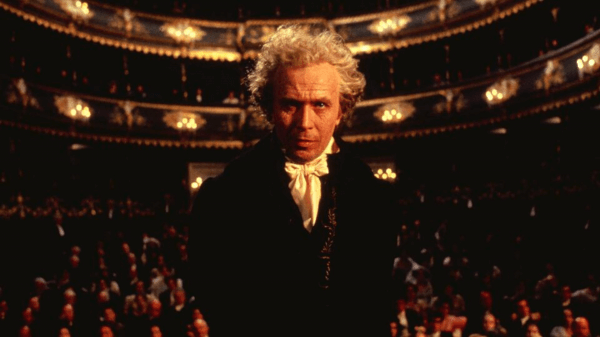There’s a shot in It’s a Wonderful Life that has no business being there. It comes very near the end of the movie but in the middle of its third-act teardown of everything George Bailey ever knew or thought or loved, right as his paranoia has taken root and begun to grow. There’s been enough discomfiting strangeness since Clarence’s arrival to turn George childwise and send him seeking comfort from the most appropriate source: his mother.
When he arrives at home, of course, it’s not there to be had. It’s Ma Bailey’s Boarding House, the woman staring back at him doesn’t recognize her son, and she doesn’t let rooms to strangers. Her face, along with the faces of everyone else in this world, is tight and shrunken in on itself, like a wounded animal facing its attacker. She tells George his beloved Uncle Billy’s been in the insane asylum for three years, then turns George back out into the indifferent night. And he turns and walks away from the house that was never his, back toward us, until his face fills the frame and his look is every inch the look of a man who was ripped away from his entire understanding of the world and his place in it.
George gives us an entire spectrum of disbelief. His straight-ahead stare is the most well-known single image from this shot, probably because in this moment it threatens to bring the fourth wall down along with the rest of Bedford Falls and drag the audience into the void as well. But there’s also George’s more starkly terrified look upon reaching the sidewalk’s end, jaw set in meaningless rage, eyes two black coins to flip for his soul.
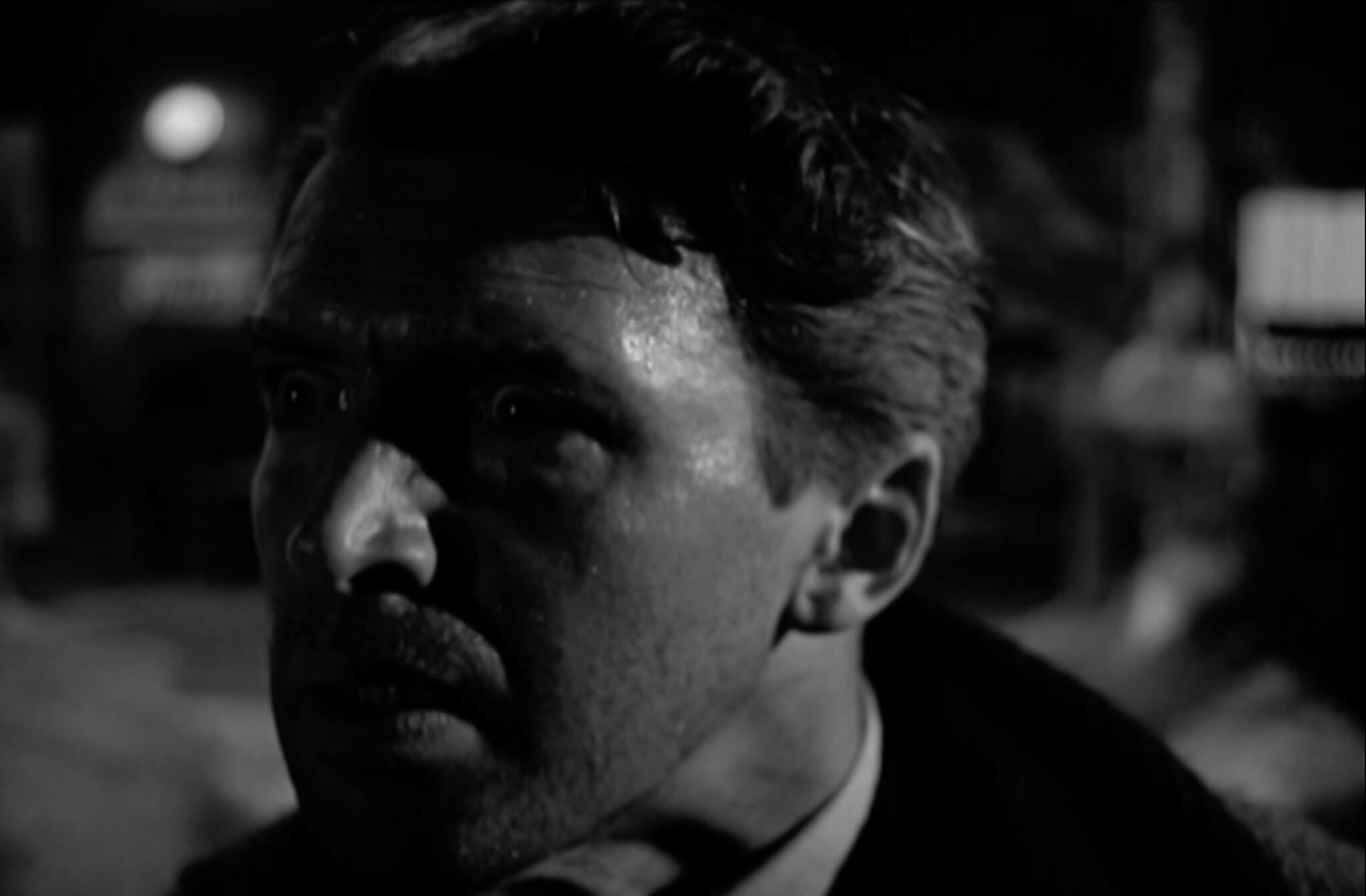
By the time George has surveyed the whole dead familiar landscape, the rage and raw mania are gone. He looks wary. Cautious. Alert to the precipice. We’ve watched George live a complete life for the second time in the film: the first one took ninety minutes; this one, no more than a few seconds.
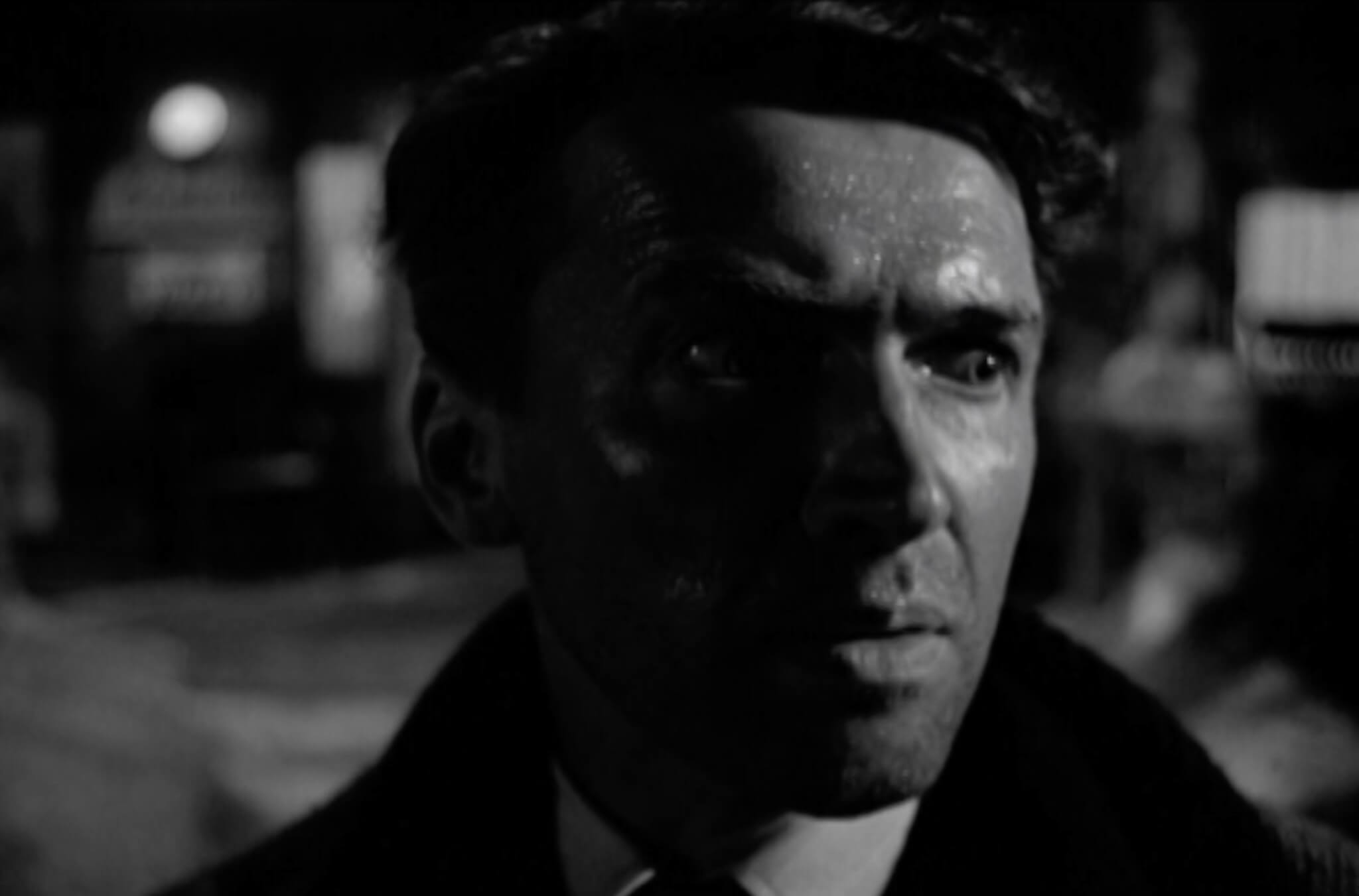
It brings to mind the Flitcraft story from Dashiell Hammett’s The Maltese Falcon, published in 1930 and thus a fitting bookend for the beginning of the Depression while It’s a Wonderful Life marks its end. The Flitcraft story goes like this: There once was a businessman named Flitcraft who had the comfortable, droll middle-class existence we now associate with more existential dread than a Parisian café, but to Flitcraft and his wife and children still signified success and decency. And everything like that. One afternoon, while walking past a construction site, a beam fell ten stories and smacked the sidewalk in front of helpless old Flitcraft. It sent a chip of the sidewalk flying to cut his cheek open. And that was all it took: “He felt like somebody had taken the lid off life and let him look at the works.”
The similarities mostly end there. Flitcraft, badly shaken by the realization that he he had been living “out of step, and not into step, with life,” resolves to run away and start over someplace completely different. He rationalizes leaving his family behind because “his love for them was not of the sort that would make absence painful.” Which may be the perfect description of the opposite of George Bailey, a man so desperate to regain the love of his family and friends that he abases himself before God, then embraces with both arms the notion of prison and so-called disgrace once God answers his prayer.
I fixate on these frames because it is breathtaking that a scenario this wretched exists in a Christmas movie. It’s just as astonishing that the same wretchedness is true of this shot: a perfect, unavoidable representation of a person’s dissolution. Probably it’s my own shortcoming that I associate Christmas movies most of all with kid-friendly pablum and saccharine romance; there’s more of Hallmark than of hard times about the holiday. And so it helps to remember that It’s a Wonderful Life was released fully in the aftermath of not just the Great Depression but the more immediate fallout from the end of the Second World War. The initial audience reaction to the film — it took several decades for critical consensus to turn and the word “classic” start getting bandied about — suggests that not many contemporary moviegoers identified Christmas with hard times, either.
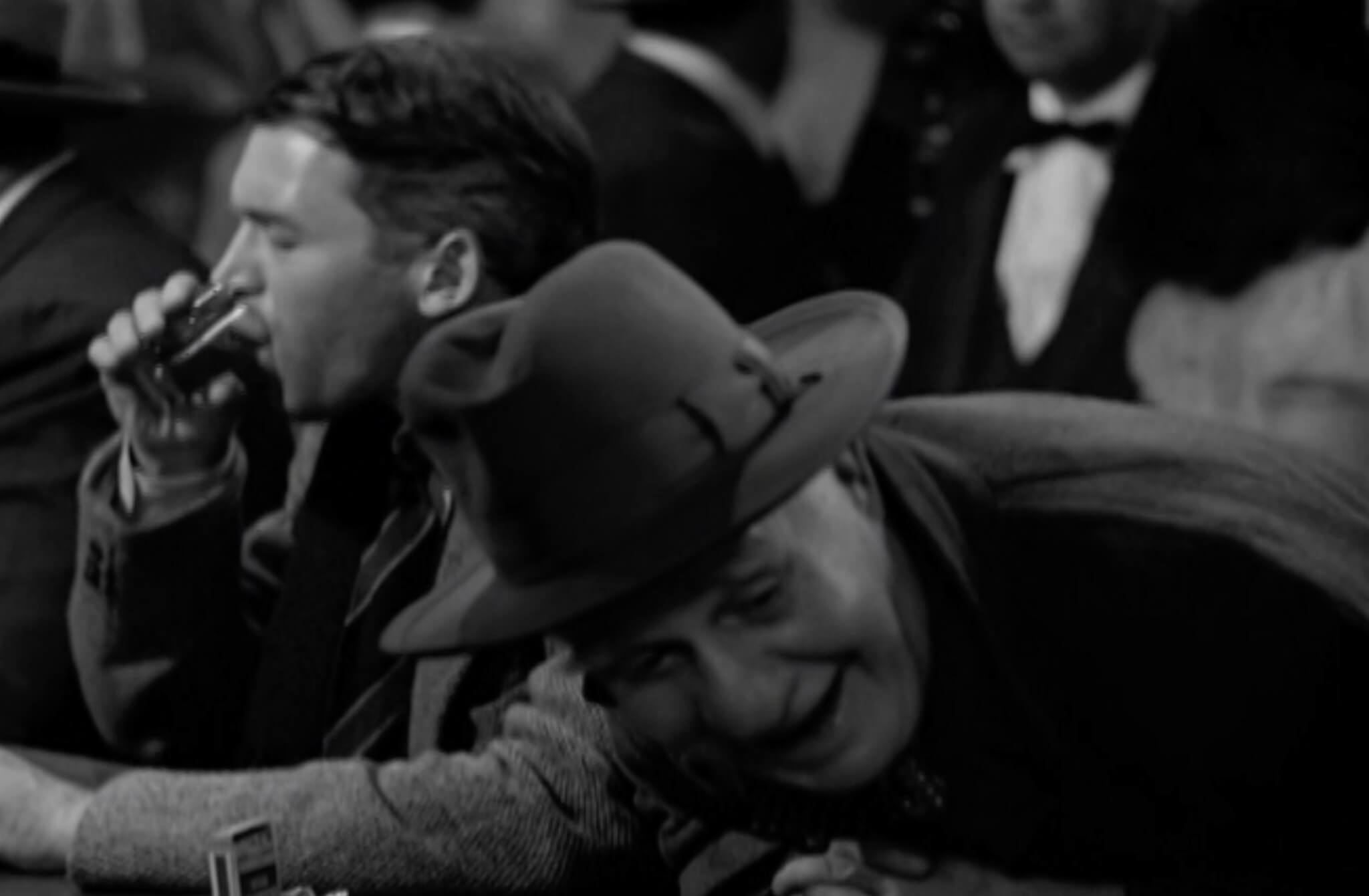
And it is kind of a big ask, this movie. By the time you’ve made it a Christmas tradition, you’ve likely forgotten how wonky its structure is. Again, we don’t get to Clarence and the big reveal of a world without George Bailey until 100 minutes into this 130 minute story. If it weren’t for the opening scene’s incorporeal angels and their occasional voiceover narration, we wouldn’t have any idea at all what’s coming, that there’s a frame story waiting to save George and ourselves. In essence, It’s a Wonderful Life gives us an extraordinary amount of exposition, then gambles that our emotional investment will carry us through to a comparatively short payoff. Off the top of my head, the only other movie I can think of that follows a similar structure is The Matrix, which is also 75% exposition and 25% forward-story.
It’s a Wonderful Life, like The Matrix, succeeds in large part because of its world building. But it has something else working in its favor thematically. It was the writer Reginald McKnight who first proposed that a noir, in essence, is a story in which “people are reduced to nothing more than appetite.” A story doesn’t have to have any gangsters or dames, debts or murders, or even antiheroes to qualify as a noir. All you need is desperation, its recognition, and a willingness to act upon it. The Postman Always Rings Twice is James M. Cain’s best-known noir, but Mildred Pierce is just as much of one.
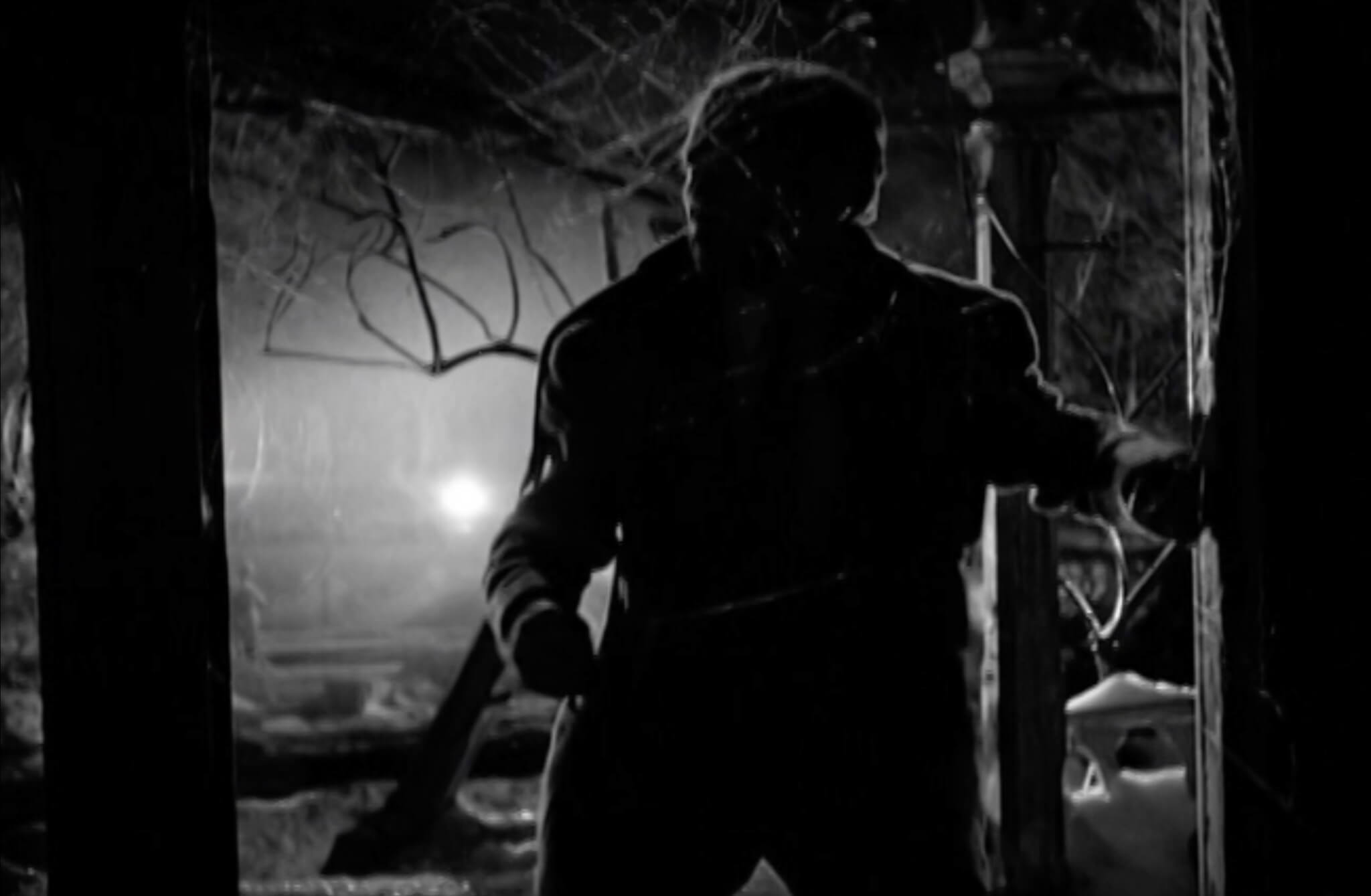
It’s no coincidence that, The Matrix aside, the same era produced every one of these stories. It’s a Wonderful Life doesn’t start from the same place, but what it builds to is every bit as shaky and dark as the hard-boiled classics. This non-traditional Christmas take uses 100 minutes to reduce George where a standard telling would have opened with him standing at the bridge, wondering if he was heavy enough to land in the water or if the wind would just carry him away.
We end in a very different place, of course, because It’s a Wonderful Life only wants to lift the lid, not live inside. The Flitcraft comparison perhaps invites the critique that George — and the film — made the wrong choice. But Flitcraft’s story gets darker still: after fleeing everything he knew, everything that he believed pushed him out of step with life, Flitcraft simply sets up shop working the same kind of job with the same kind of family in the same kind of place a thousand miles away from the first one. George goes back to his family because it sustains him. We’ll always fight for what keeps us alive, truly alive, provided a chance to remember what that is. Christmas is a falling beam.
It’s a Wonderful Life
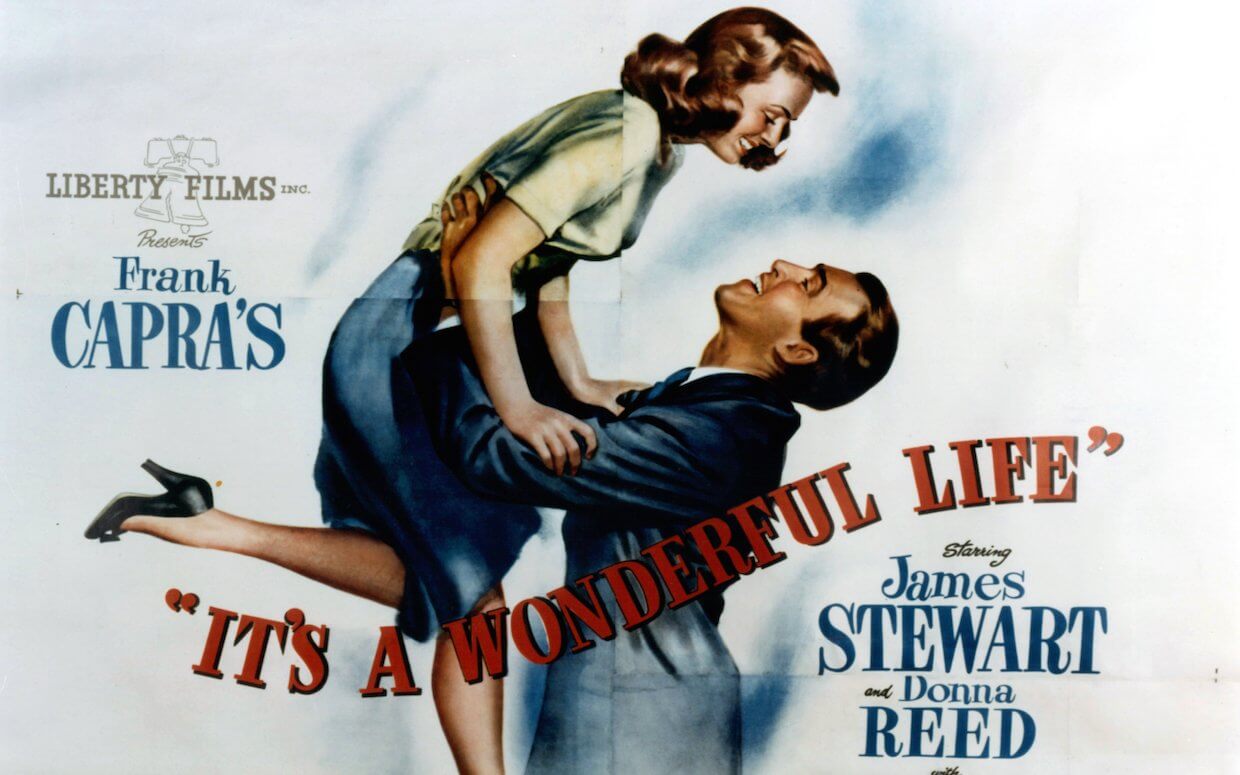
...
More on Plex:
Scrooge (1935)
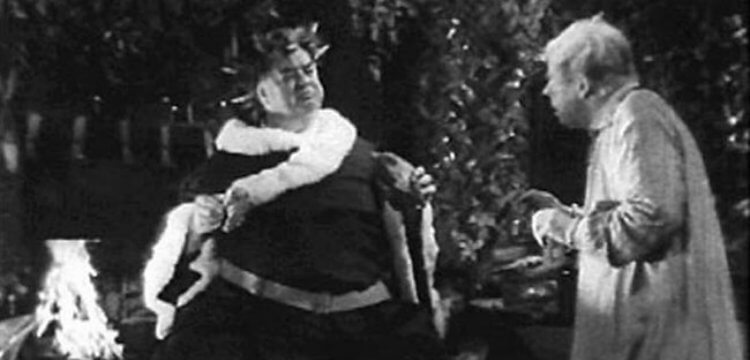
...




